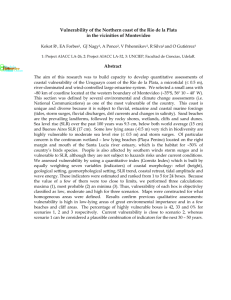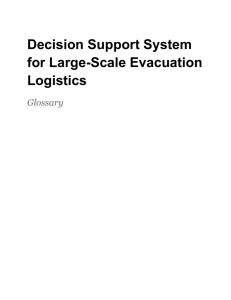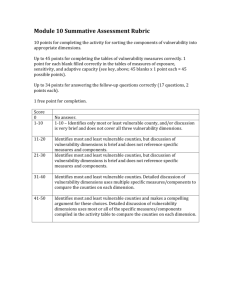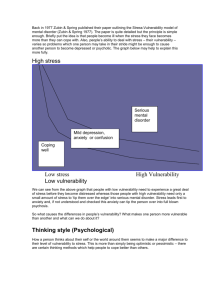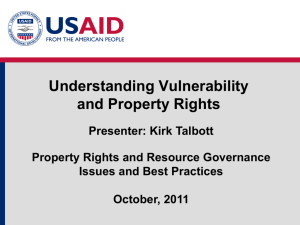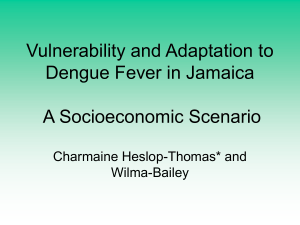Assignment 7
advertisement
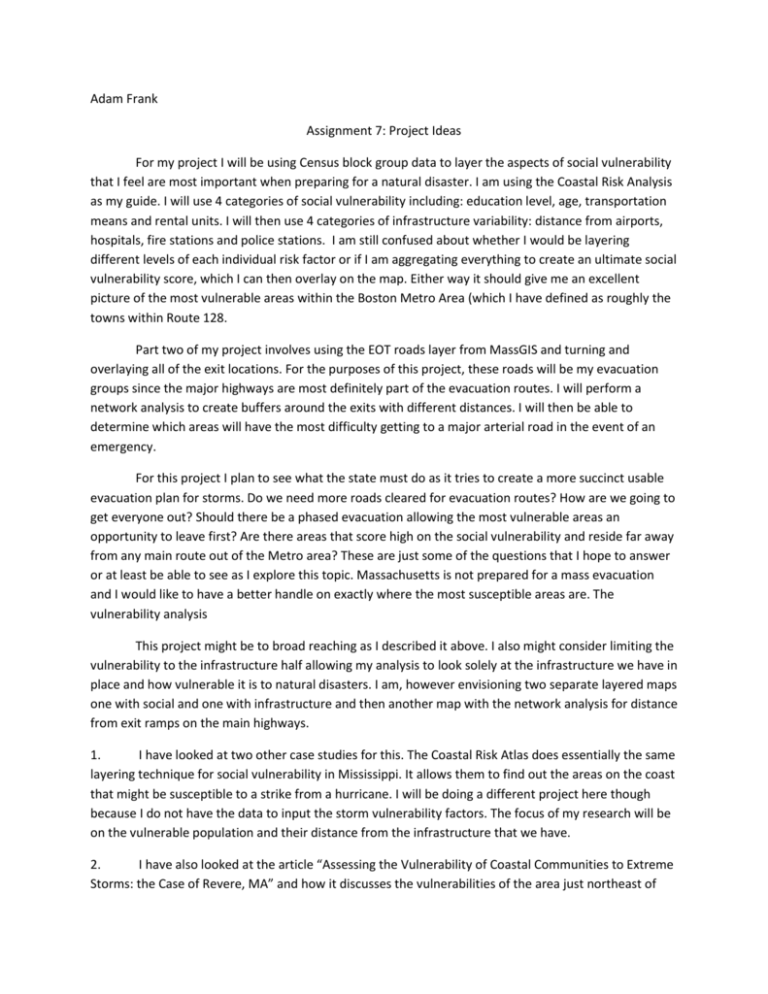
Adam Frank Assignment 7: Project Ideas For my project I will be using Census block group data to layer the aspects of social vulnerability that I feel are most important when preparing for a natural disaster. I am using the Coastal Risk Analysis as my guide. I will use 4 categories of social vulnerability including: education level, age, transportation means and rental units. I will then use 4 categories of infrastructure variability: distance from airports, hospitals, fire stations and police stations. I am still confused about whether I would be layering different levels of each individual risk factor or if I am aggregating everything to create an ultimate social vulnerability score, which I can then overlay on the map. Either way it should give me an excellent picture of the most vulnerable areas within the Boston Metro Area (which I have defined as roughly the towns within Route 128. Part two of my project involves using the EOT roads layer from MassGIS and turning and overlaying all of the exit locations. For the purposes of this project, these roads will be my evacuation groups since the major highways are most definitely part of the evacuation routes. I will perform a network analysis to create buffers around the exits with different distances. I will then be able to determine which areas will have the most difficulty getting to a major arterial road in the event of an emergency. For this project I plan to see what the state must do as it tries to create a more succinct usable evacuation plan for storms. Do we need more roads cleared for evacuation routes? How are we going to get everyone out? Should there be a phased evacuation allowing the most vulnerable areas an opportunity to leave first? Are there areas that score high on the social vulnerability and reside far away from any main route out of the Metro area? These are just some of the questions that I hope to answer or at least be able to see as I explore this topic. Massachusetts is not prepared for a mass evacuation and I would like to have a better handle on exactly where the most susceptible areas are. The vulnerability analysis This project might be to broad reaching as I described it above. I also might consider limiting the vulnerability to the infrastructure half allowing my analysis to look solely at the infrastructure we have in place and how vulnerable it is to natural disasters. I am, however envisioning two separate layered maps one with social and one with infrastructure and then another map with the network analysis for distance from exit ramps on the main highways. 1. I have looked at two other case studies for this. The Coastal Risk Atlas does essentially the same layering technique for social vulnerability in Mississippi. It allows them to find out the areas on the coast that might be susceptible to a strike from a hurricane. I will be doing a different project here though because I do not have the data to input the storm vulnerability factors. The focus of my research will be on the vulnerable population and their distance from the infrastructure that we have. 2. I have also looked at the article “Assessing the Vulnerability of Coastal Communities to Extreme Storms: the Case of Revere, MA” and how it discusses the vulnerabilities of the area just northeast of Boston. The same is the case here. I do not have data to look at the actual risk factors for the storm. Revere is well ahead of the curve for Massachusetts municipalities and it should be used as a model as we move forward, but for now it will look simply at social risk and infrastructure risk, which I believe is of crucial importance when looking at mass evacuations.

